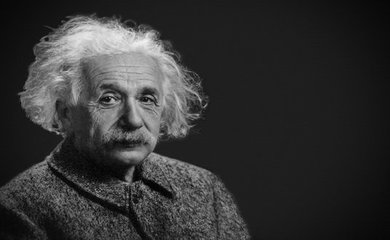Albert Einstein, born on March 14, 1879, in Ulm, Germany, is a name synonymous with genius, theoretical physics, and the profound transformation of our understanding of the universe. In this blog post, we embark on a journey through the life, career, inventions, and groundbreaking theories of one of the most brilliant minds in history.
Early Life and Education:
Albert Einstein showed an early aptitude for mathematics and science, but his unconventional thinking often clashed with the rigid educational system of his time. Despite facing challenges, he pursued his passion for physics and mathematics, eventually earning a degree from the Swiss Federal Institute of Technology in Zurich. This marked the beginning of a career that would reshape the foundations of physics.
The Annus Mirabilis Papers:
In 1905, often referred to as his “Annus Mirabilis” or miraculous year, Einstein published four groundbreaking papers that would forever alter the course of physics. These papers explored the photoelectric effect, Brownian motion, special relativity, and the famous equation E=mc², showcasing Einstein’s unparalleled intellect and innovative thinking.
Special and General Relativity:
Einstein’s theory of special relativity, published in 1905, challenged classical notions of time and space. It introduced the concept that time is relative and depends on the observer’s frame of reference. In 1915, he presented his theory of general relativity, which described gravity as the curvature of spacetime caused by mass. This theory revolutionized our understanding of the cosmos, predicting phenomena such as gravitational time dilation and the bending of light around massive objects.
Nobel Prize and Academic Achievements:
Einstein was awarded the Nobel Prize in Physics in 1921 for his explanation of the photoelectric effect. Despite this recognition, his ideas faced resistance from some quarters of the scientific community. Nevertheless, Einstein’s academic career flourished, and he held positions at notable institutions such as the University of Berlin and the Institute for Advanced Study in Princeton, New Jersey.
Political Activism:
Einstein was not only a scientific visionary but also a vocal advocate for social and political causes. His pacifist stance during World War I and his commitment to civil rights, pacifism, and Zionism reflected his broader concerns for humanity. As the Nazi regime rose to power in Germany, Einstein, who was of Jewish heritage, settled in the United States, becoming an American citizen in 1940.
Later Life and Legacy:
In the latter part of his life, Einstein continued his quest for a unified theory that could explain all the fundamental forces of the universe. Unfortunately, he was unable to achieve this goal. Einstein passed away on April 18, 1955, leaving behind a legacy that transcends science. His ideas continue to shape our understanding of the universe, and his contributions to humanity extend beyond the realm of physics.
Conclusion:
Albert Einstein’s life is a testament to the power of intellectual curiosity, perseverance, and revolutionary thinking. From his early struggles to his transformative theories, Einstein’s legacy endures as a beacon of inspiration for scientists, scholars, and thinkers worldwide. As we reflect on the profound impact of his work, we are reminded that the quest for knowledge knows no bounds, and the brilliance of one individual can reshape the very fabric of our understanding of the cosmos.




